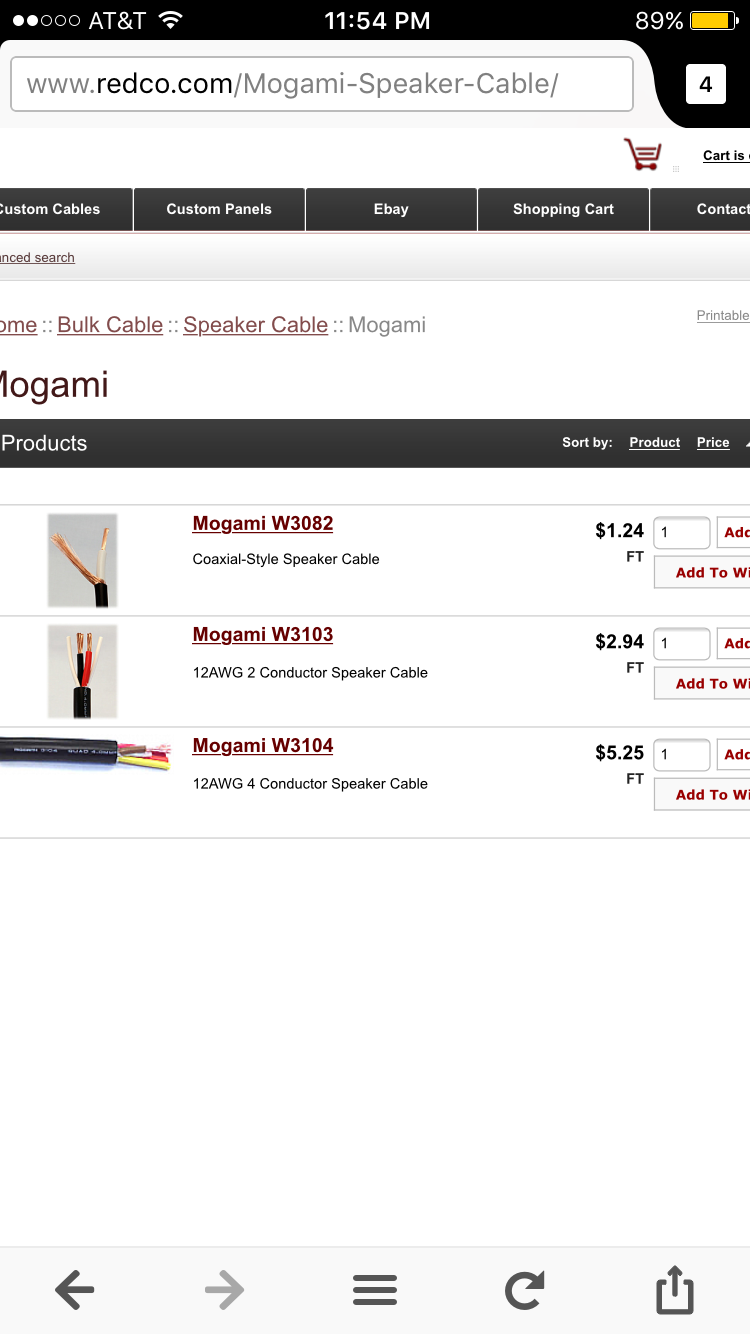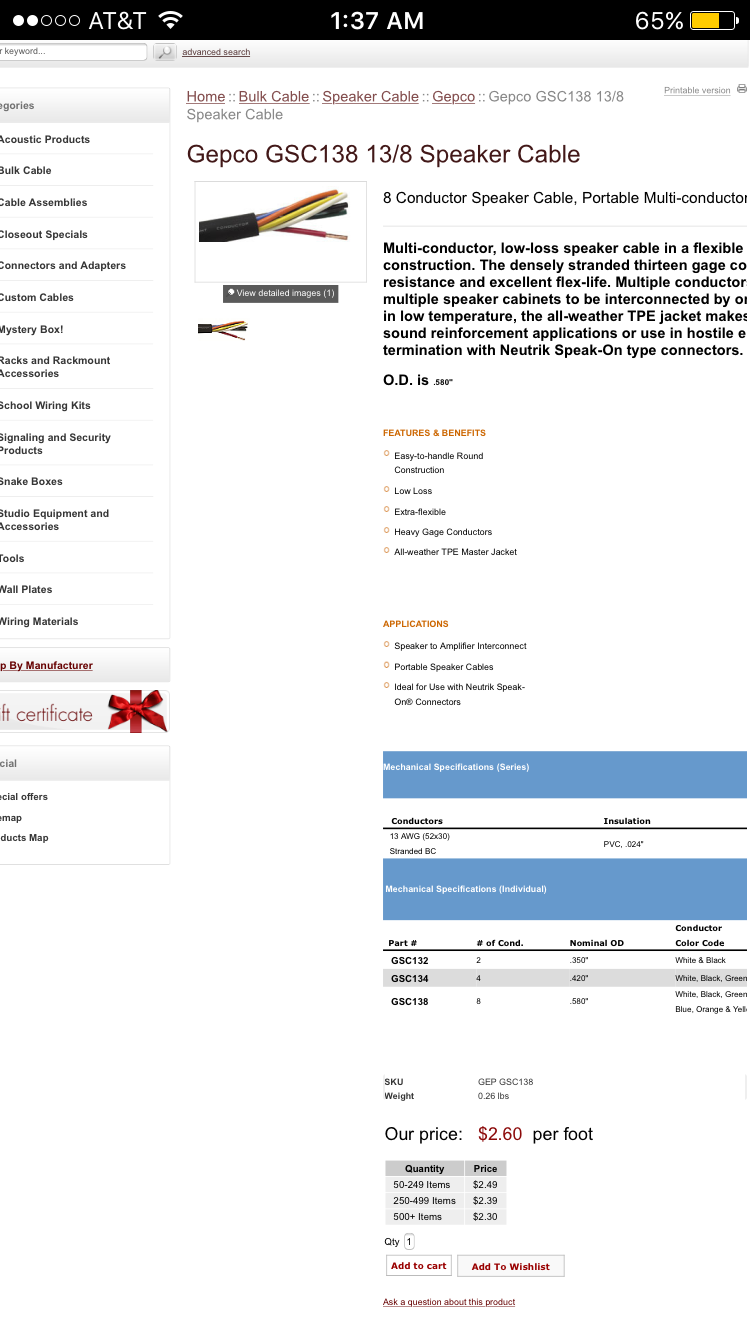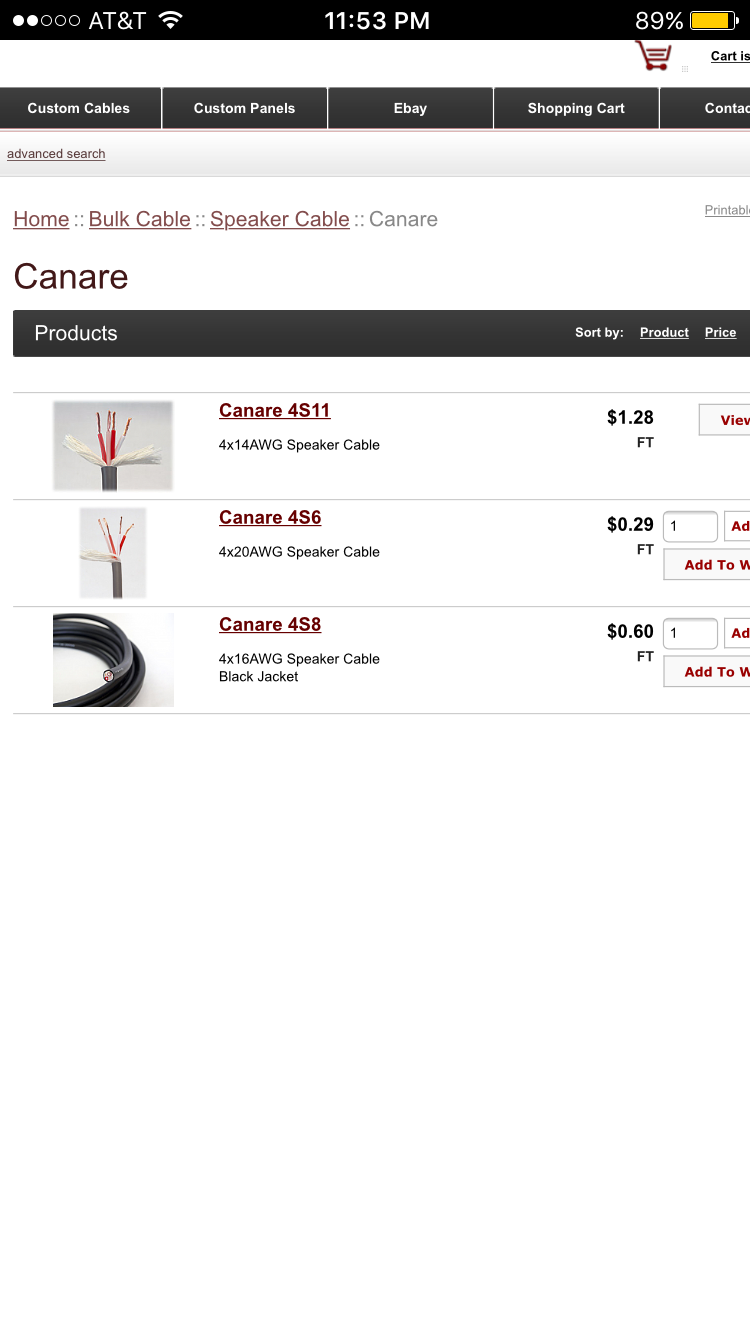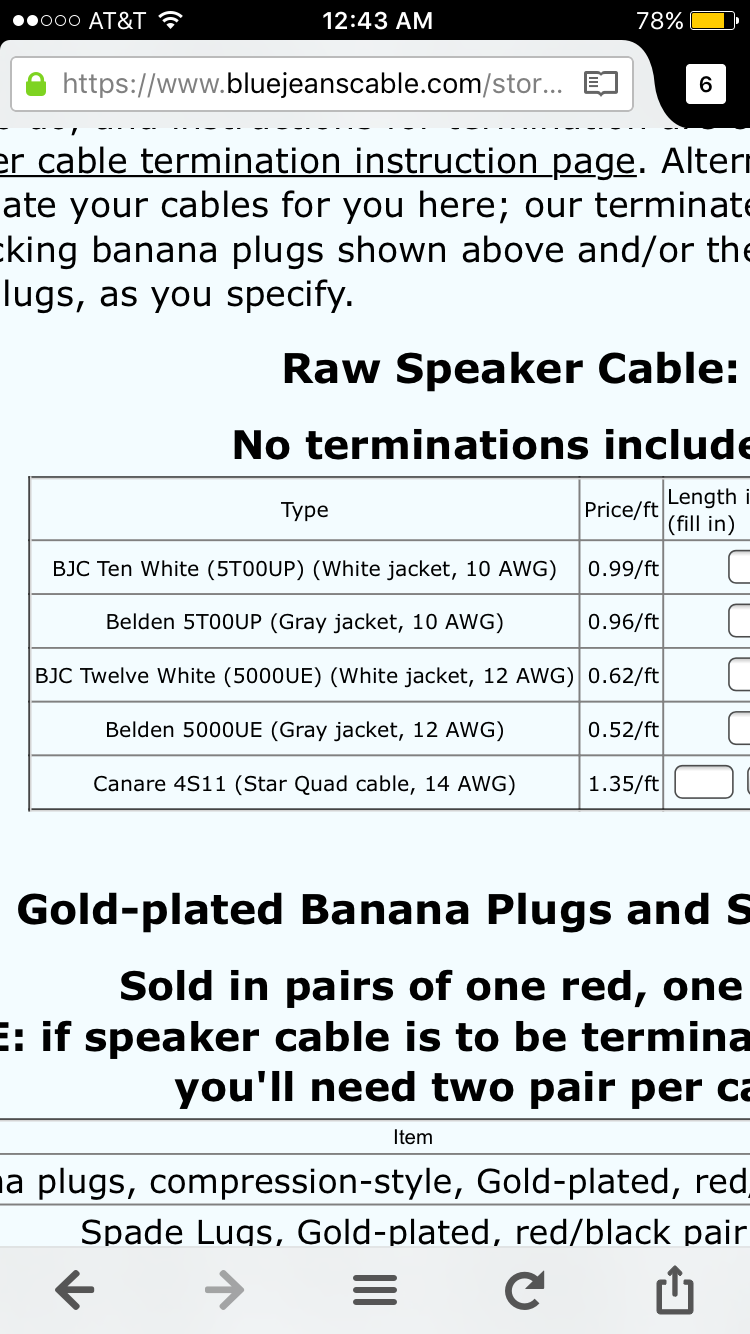Hey guys, I'm doing some wiring specs (exciting right ? Lol) and I'm completely unsure of what to go with.
It's speaker wire for a cinema setup. The surrounds, and the Screen Channel speakers accept up to 10awg wire with barrier strip screw terminals. The reference speakers and subs are on speakin NL-8 connectors which accept up to 12awg wire.
625w (or 400w)per surround single amp, 625w/1150w or the refernce top tri amp, 1150w for the subs (dual 12") single amp. Same for the screen channel speakers 625w bi amp, 1150w for the subs (dual 18") single amp. Lol the 21" sub will be for fun someday. 2500w...
The manual simply states 'use the lowest gauge wire, and shortest cable run.'
The place is roughly 16x22 (tiny by film standard but it's only temporary-ish) so I would imagine the average cable run between 20-50ft.
It's going in my yet to be built or even drawn, home studio room. I'm gonna work out the electric and physical runs so they should be clear of any interference.
So it looks like there's 5 options for cable:
Belden 5T00up- 10awg 2 conductor
Canare 4S11- 14awg 4 conductor
Mogami W3104- 12awg 4 conductor
Mogami W3103- 12awg 2 conductor
Gepco GSC138- 13awg 8 conductor.
I'll include screenshots of the w some prices but the only one that's a bit painfully priced is the Mogami w3104, at $5.25 per foot.
But that said this thing has got to be as technically correct as possible becuase there's nothing cheap about the cinema system. Besides that the runs are short enough to not be disgustingly expensive with any option. The system design is all about max headroom and efficiency with minimal components.
I feel proper setup, spec, and calibration, will help maximize the results of some of this stuff which is low-mid pro standard class.
So anyway it seems 8 conductor wire for the NL8 speakons makes sense. Gepco is usually a decent budget wire. I'm open to options.
As far as 2-4 conductor I'm wondering if the 4 conductor wire is overkill becuase the system is gonna be pretty interagency free. Should I use that for Bi amp applications? Is it overkill for a per channel basis?
Also is the 2 conductor 10awg better overall than the 12-14awg 4 core.
Honestly I'm kinda lost on this whole thing. I'm not used to things that are both high power and high quality.
Is there one technical ideal to shoot for?
I'm gonna work on my mobile system wiring while I'm waiting for response on this. But I'm getting the gear budget ready for the accountant and there's a significant (50% approx)jump between the 12awg 2 and 4 core. I don't mind whatever it ends up costing as long as there's no waste, and no compromise. 'Just right' is what I'm shooting for.
Thanks.
Comments
That's killer! At 20lbs those mini line spearhead tick the best
That's killer! At 20lbs those mini line spearhead tick the best box! Lol.
I agree 100% about being an installer. I've gotten to use a huge variety of gear in real-world situations, that I wouldn't otherwise be able to use just by doing freelance and installation work. Those experiences have really allowed me to cater my own gear purchases to what I really want/need as opposed to what looks cool in the catalogs or what sounds good at the store that day. I have to admit it save me quite a lot money and mental anguish being able to try all this gear. Some very affordable pieces have impressed me for that price, and some very expensive gear has left me underwhelmed at their asking price, or even far below it.
I think that those experiences Are really priceless.
Sounds like you've got quite a good selection of gear going on these days !!!!!! It seems live gear just keeps getting better and better, where studio gear has kind of it's own peaks and valleys due to the differences in technology particularly digital versus analog.






The SRXs make a really nice club rig, and do a nice job at mediu
The SRXs make a really nice club rig, and do a nice job at medium-throw outdoor stuff. It you wanted to really project beyond a couple hundred feet, you'd need to go up to something that can be properly arrayed. They'll certainly take all the power you can send them.
If I want to throw longer distances I have a killer little pair of vertical line arrays. It's funny, like they say, "everything old is new again". These VLAs made by PZ Tronics in the Buffalo NY area are almost a throwback to the old Vocalmaster speaker columns of the late 60's and early 70's. Unlike the old-school cabinets, they're 6ft tall, and only about 4" wide, and 4" deep, and since the box is all aircraft-grade aluminum they weigh in at about 20 lbs. They use 20 x 3" neodymium drivers and are very useable down to about 100Hz. I can add a tight little E-V 12" sub, or the beefier Clair Bros. MD-18 sub to them and it's just ridiculous, especially outdoors. These VLAs throw 160˚ wide and only 5˚ up/down, so if you can see the front of the box at all, you can hear it. And like any other line array, they do twice as well over distance, compared to a typical point-source speaker. You only lose 3dB per doubling of distance. Because of the throw characteristics I install a lot of these in churches, because A) they're not very obtrusive and easy to hide, B) I can get good level to the back of the room without killing the people in the front pews, and since C) they're extremely feedback resistant, I can even put them behind the pulpit if I have to and have little concern about feedback. They're not especially flat, and not particularly efficient (it's got 20 drivers to get going!), but give them a 1000w or so, and the output is really pretty amazing without ever being harsh-sounding, even standing right in front of them.
Sometimes it's good to be an installer, :) you really get to sample some quality wares. And if you want to, you get to accumulate a nice variety of gear, so you can scale the right rig for any job, rather than have to 'make do' with just one option.